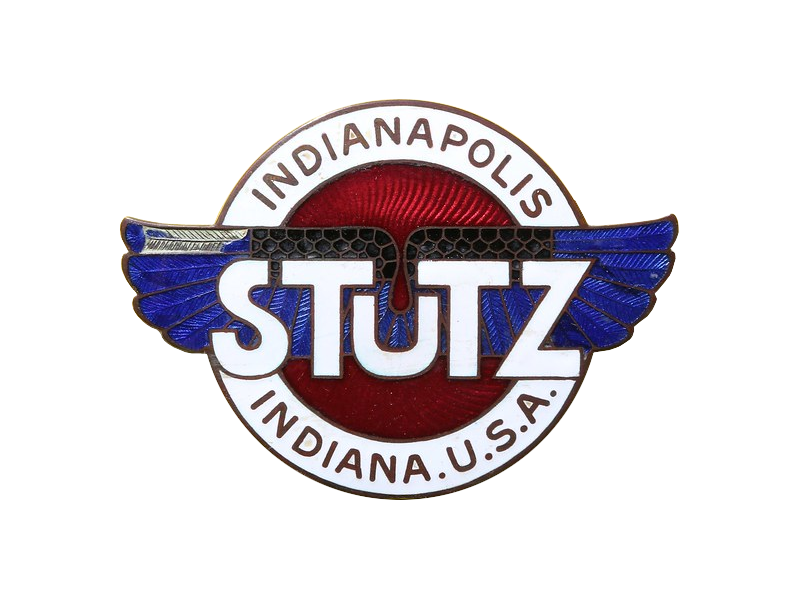1927 Stutz Black Hawk Challenger

The descriptions of the Classic Cars in the Directory were partly generated or supplemented with the help of artificial intelligence (AI). The content may occasionally not always be entirely accurate or factually correct despite careful checking.
The Stutz Black Hawk Challenger 1927 is a pinnacle of automotive design from the early 20th century. This elegant and powerful car was produced by Stutz Motor Company, which was known for manufacturing high-end luxury vehicles with exceptional performance. The Black Hawk Challenger was the successor to the highly successful Stutz Black Hawk model and boasted a range of technical advancements and design features.
One of the most significant developments in the Black Hawk Challenger was the incorporation of Stutz's own 5.3-liter overhead camshaft, inline-eight engine. This powerful engine generated a whopping 115 horsepower at 2,800 RPM, allowing the car to achieve a top speed close to 100 mph. The engine was paired with a three-speed manual transmission, and it was known for its smooth operation and efficient power delivery.
The suspension system was also exceptional, featuring semi-elliptic springs and a beam axle at the rear, while the front wheels were supported by a transverse leaf spring. This configuration allowed for excellent handling and a comfortable ride for the passengers in the spacious cabin, which was lined with luxurious materials.
The Stutz Black Hawk Challenger 1927 was a formidable car that showcased the latest in automotive engineering and technology. In addition to its powerful engine and suspension system, the Black Hawk Challenger also featured a robust braking system, which included mechanical brakes on all four wheels. The brakes were operated via a hand lever, and they had a reputation for being highly effective, providing the car with excellent stopping power.
Other notable technical features included the car's wire-spoke wheels, which were wrapped in high-quality, durable tires that were designed to endure even the toughest road conditions. The car also had distinctive Art Deco styling, which was featured in the car's exterior design, including its hood ornament, radiator, and headlamp assemblies. The car's iconic appearance was part of its appeal, making it stand out from other vehicles of its era.
Overall, the Stutz Black Hawk Challenger 1927 was a magnificent automobile that combined sophisticated, powerful engineering with beautiful design. It remains an object of fascination for automotive enthusiasts and collectors, a testament to the sheer class and brilliance of early 20th-century automotive technology.
Milestones
- The Stutz Black Hawk Challenger was introduced in 1927 as a high-performance luxury car. - It was powered by a 5.3-liter straight-eight engine that produced 115 horsepower. - The car featured an art deco-inspired design with a long hood, sweeping fenders, and a low-slung profile. - The Black Hawk Challenger was a hit with wealthy buyers, who appreciated its speed, style, and exclusivity. - In 1928, Stutz introduced a supercharged version of the Black Hawk Challenger, which boosted power to 185 horsepower. - The car was raced with great success, winning the 24 Hours of Le Mans in 1928 and 1930. - Production of the Black Hawk Challenger continued through 1929, when the Great Depression led to a decline in luxury car sales. - Today, the Stutz Black Hawk Challenger is considered a classic of the art deco era, with examples fetching high prices at auction.Technical
- Manufacturer: Stutz Motor Company - Model: Black Hawk Challenger - Year of production: 1927 - Body style: two-passenger roadster - Engine: inline eight-cylinder engine - Engine displacement: 289 cubic inches - Power output: 90 horsepower - Transmission: three-speed manual - Suspension: semi-elliptic leaf springs - Brakes: four-wheel hydraulic drum brakes - Wheelbase: 120 inches - Overall length: 165 inches - Overall width: 68 inches - Overall height: 60 inches - Curb weight: around 2,900 pounds - Top speed: around 95 miles per hour - Production volume: around 1,300 units.